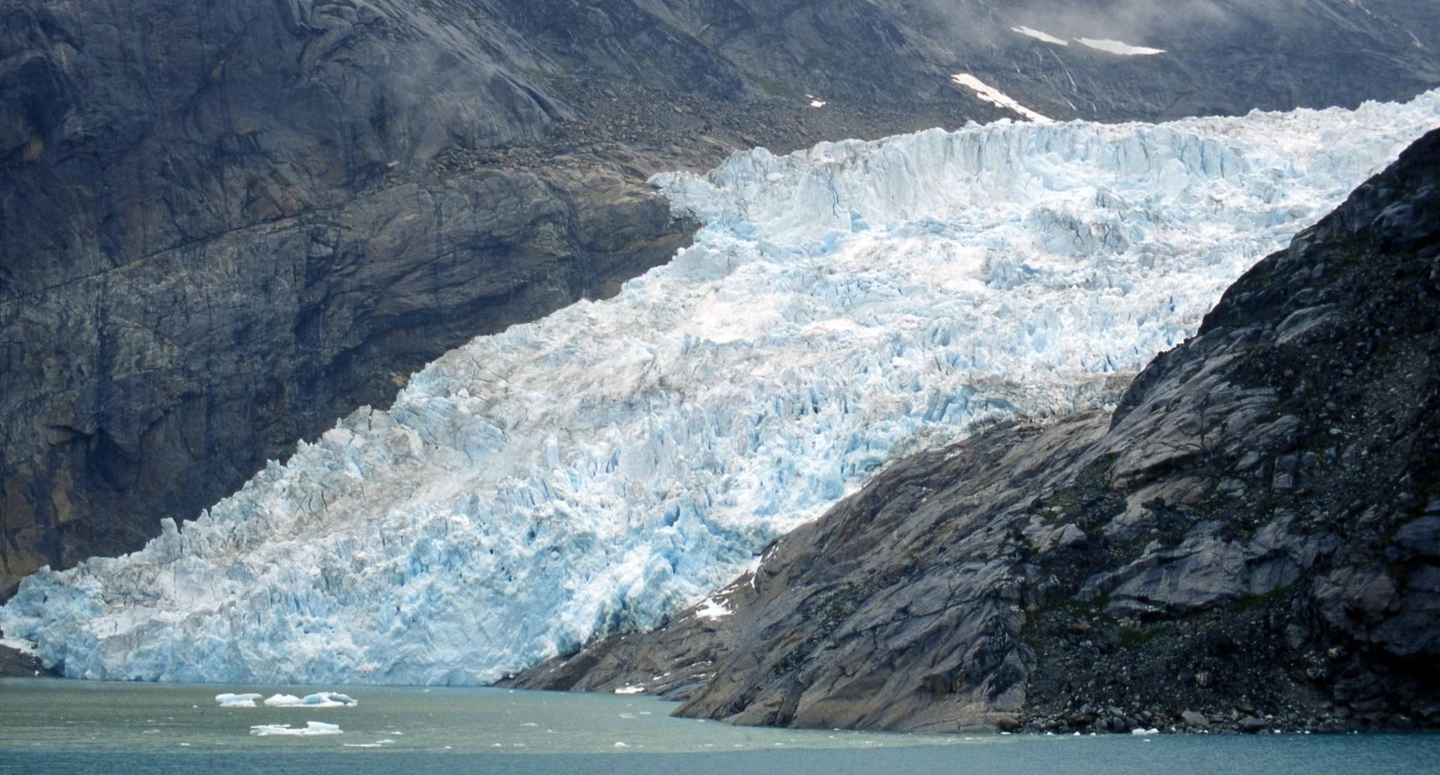Melting ice age glaciers triggered surprising changes deep within Earth
Melting glaciers sped up plate motion and sparked volcanic eruptions, reshaping Earth’s crust in just 10,000 years.

A glacier flows into the sea from modern-day Greenland. (CREDIT: CC photo via Flickr)
As the last Ice Age came to an end nearly 10,000 years ago, something unexpected happened deep beneath Earth’s surface. Large glaciers began to melt. The sea levels rose quickly—about 1 centimeter per year. And far below, Earth’s crust began to move in ways scientists are only now beginning to understand.
New research from scientists Tao Yuan and Shijie Zhong at the University of Colorado Boulder shows that melting glaciers may have done more than just raise oceans. Their simulations suggest that these giant sheets of ice may have sped up the motion of tectonic plates and even increased volcanic activity. The study, published in Nature, adds a new twist to the story of how Earth’s surface evolves over time.
What happens when glaciers melt
During the past 3 million years, Earth’s surface has gone through a series of glacial cycles. These cycles include long periods when ice sheets grow and then disappear. Every 40,000 to 100,000 years, massive glaciers form, spread, and later melt away, shaping the planet’s climate and surface.
Each time the ice grows or melts, it changes the weight pressing down on the crust and mantle below. This change can shift the surface not just up and down, but also side to side.
Scientists call this process glacial isostatic adjustment, or GIA. It's like what happens when you lie on a memory foam mattress and then get up. The foam slowly returns to its original shape—but with Earth, the crust can take thousands of years to rebound.
Researchers have long known that GIA causes vertical motion. Land near past glaciers, like the area around Canada’s Hudson Bay, is still rising today—about 1 centimeter per year. But the new study finds that horizontal motion, or sliding of Earth’s surface, can also be significant. In fact, it's strong enough to influence the drifting of continents.
Zhong explained, “That story that we’ve been telling for a long, long time—that processes like seafloor spreading and continental drift operate at timescales of millions of years driven by Earth’s internal engine, thermal convection—that’s still true, but we show that glacial forcing can also cause significant motion on relatively short timescales of 10,000 years.”
Related Stories
A shift in Earth's plates
To test this idea, Zhong and Yuan used a high-resolution open-source computer modeling program called CitcomSVE-3.0. With it, they built realistic models of the Earth's surface, mantle, and crust. These models included weak zones at the edges of tectonic plates, varying thicknesses in the lithosphere (the rigid outer layer of Earth), and even different layers of ice that had once covered the continents.
They ran 17 simulations using two widely accepted ice history models—ICE-6G and ANU—and different mantle viscosity structures. Their goal: to recreate Earth’s movement during and after the last glacial cycle, which peaked about 26,000 years ago. The horizontal resolution in most of their models was about 30 kilometers, fine enough to simulate the behavior of 100-kilometer-wide tectonic plate boundaries.
The models revealed surprising results. When the giant Laurentide Ice Sheet covering North America began to melt, the North American Plate rotated and moved faster. The scientists calculated that its horizontal speed may have increased by as much as 25%. That’s a huge shift, considering tectonic plates typically creep along at rates of just a few centimeters per year.
Further east, the Mid-Atlantic Ocean Ridge also sped up. This ridge lies between the North American and Eurasian plates and runs through Iceland. Between 12,000 and 6,000 years ago, the spreading rate along the ridge may have increased by as much as 40%. For a process thought to be slow and steady, this was a major jolt.
Yuan said, “As ice volume was greatly reduced, it caused a huge motion in Earth’s crust. Scientists knew that the ice melting caused the plates to uplift. But we show that they also moved a lot horizontally due to the ice melting.”
Why volcanic eruptions increased
The changes didn’t stop with plate movement. The study also connects these shifts to a spike in volcanic activity. Geological records show that Iceland experienced a burst of eruptions at the end of the last Ice Age. Since then, that volcanic activity has calmed.
According to the new models, the melting of the Greenland Ice Sheet may have played a role in this fiery period. As the glaciers shrank, they relieved pressure on the crust, allowing more magma to rise. The Iceland Ridge, where the plates pull apart and magma rises from below, became more active.
“This pattern of volcanism may have been partly due to the glacial melting that we studied,” said Zhong.
The researchers also discovered a wider pattern: sea-floor spreading speeds increased during periods of deglaciation and slowed during glaciation. These fluctuations likely affected mantle degassing—the process by which gases escape from deep within Earth. These changes, in turn, may have fed back into the climate system, perhaps influencing future glacial cycles.
Today’s thaw may echo the past
Although Earth’s continents today are not drifting much faster due to current ice melt, the study’s findings could carry a warning. Greenland’s ice sheet is once again melting quickly. West Antarctica is also losing ice. If these trends continue, the effects may extend beyond rising sea levels.
“In the future, ice melting could enhance seafloor spreading and volcanism at nearby mid-ocean ridges,” Yuan said.
That could have serious consequences. More volcanic eruptions near Iceland might affect air travel and release more carbon dioxide into the atmosphere. Small shifts in tectonic plates could also increase stress along faults, perhaps triggering earthquakes in regions already sensitive to seismic activity.
The scientists stress that they’re not saying we should expect dramatic shifts in the next few years. But over the course of several hundred to a few thousand years, the influence of melting glaciers could reshape the very structure of Earth’s crust—just as it did at the end of the last Ice Age.
By rethinking how glaciers interact with tectonics, the study opens a new chapter in Earth science. It suggests that Earth’s surface isn’t just shaped by what’s inside it, but also by what sits on top—giant ice sheets that come and go over millennia.
Note: The article above provided above by The Brighter Side of News.
Like these kind of feel good stories? Get The Brighter Side of News' newsletter.



